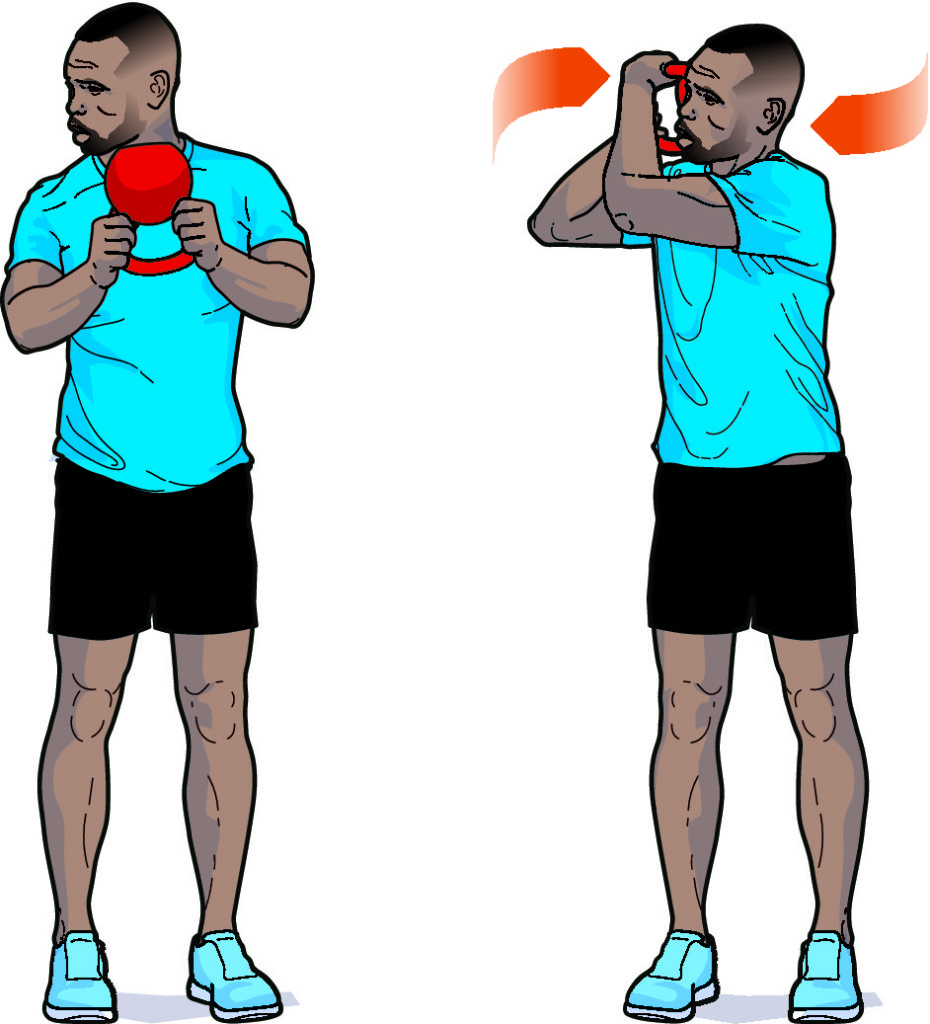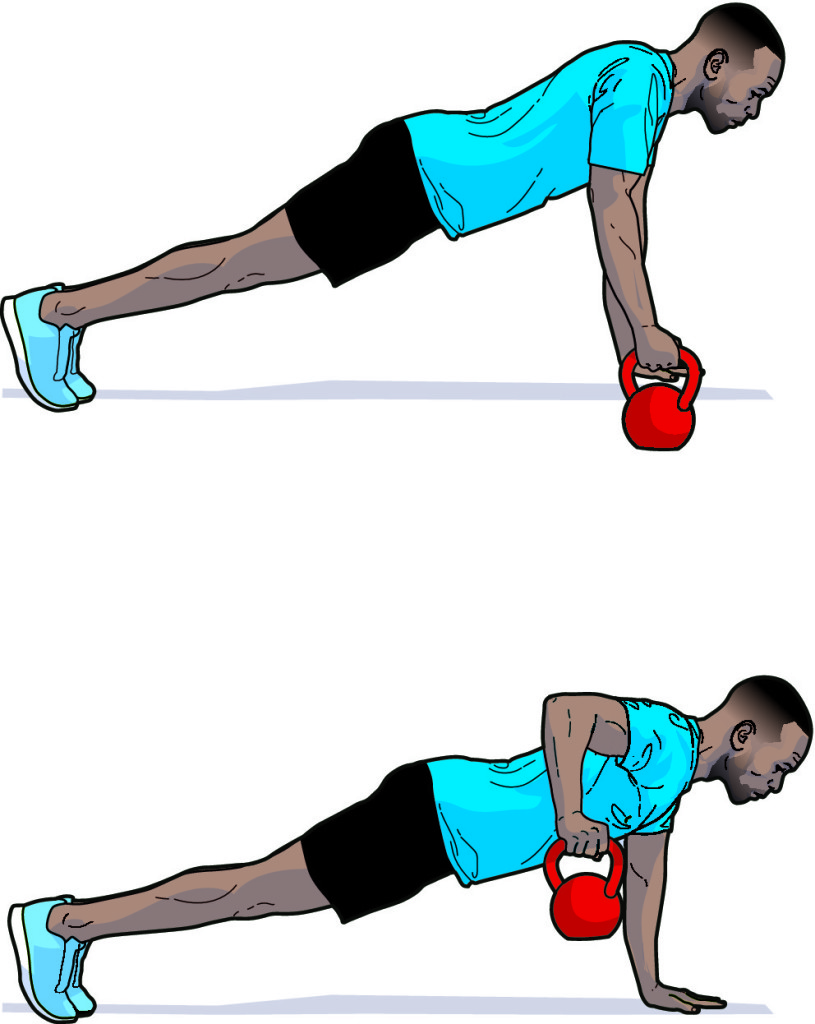
Exercise 1: Plank Rows
Muscles:
Upper back, upper arms and core (rhomboids, triceps, transversus abdominus)
Why do it?
Strong upper back muscles will improve your posture and your running technique.
Technique:
- Position yourself on all fours
- Hold a kettlebell in one hand
- Lift your knees off the floor to perform a straight-arm plank
- Ensure that you keep your knees, hips and shoulders in line
- Pull kettlebell up to your armpit
- Keep your hips level and don’t rotate
- Lower the weight back to the floor but don’t rest
- Complete one set before switching sides
Safety tip:
If you find the exercise too hard, keep your knees on the floor.
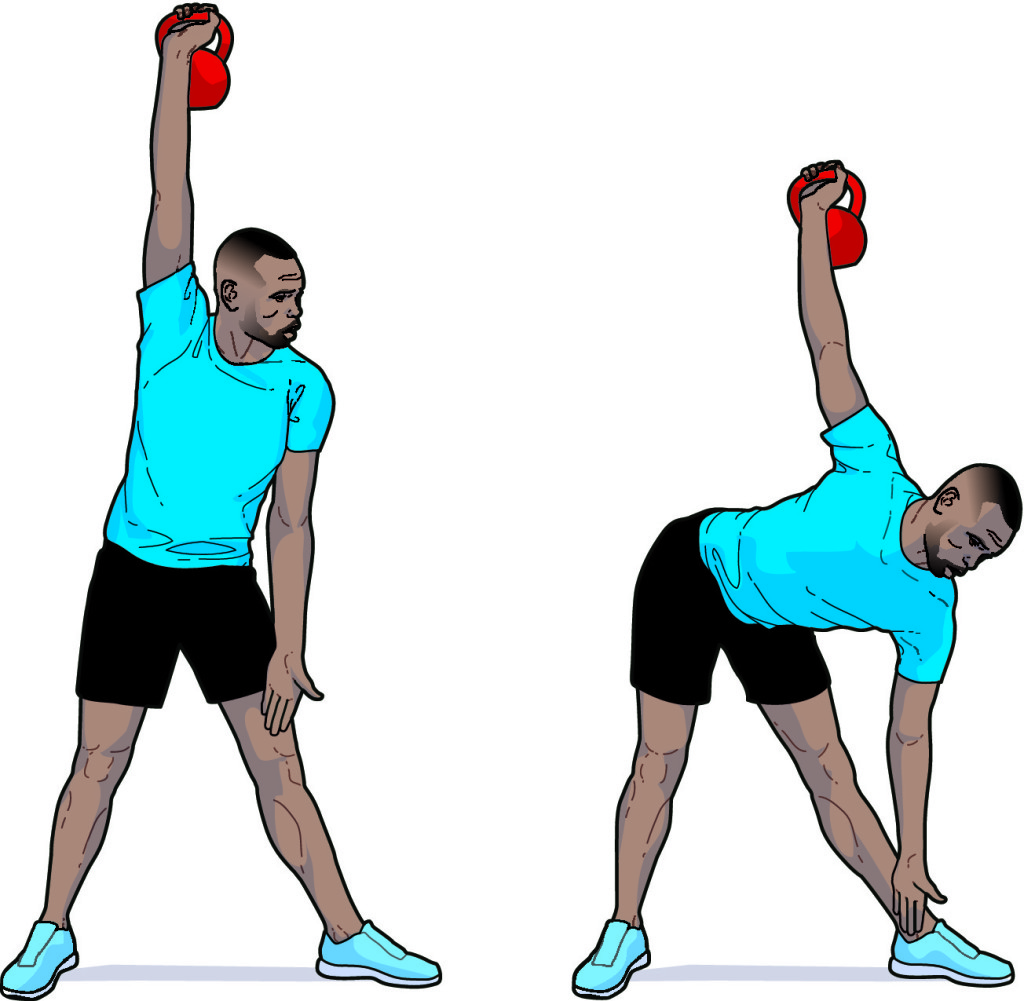
Exercise 2: Windmills
Muscles:
Side muscles (obliques)
Why do it?
The stronger your side muscles, the better your body will work as a unit when you run.
Technique:
- Stand with your feet wider than hip-width
- Turn one foot 90 degrees out and the other foot 45 degrees
- Hold a kettlebell in one hand and extend your arm above your head
- Keep your arm close to your ear
- Lower your free hand towards the foot which is turned out 90 degrees
- Slowly lift your body up until your arm is next to your ear
Safety tip:
Keep the kettlebell held straight up to the ceiling.
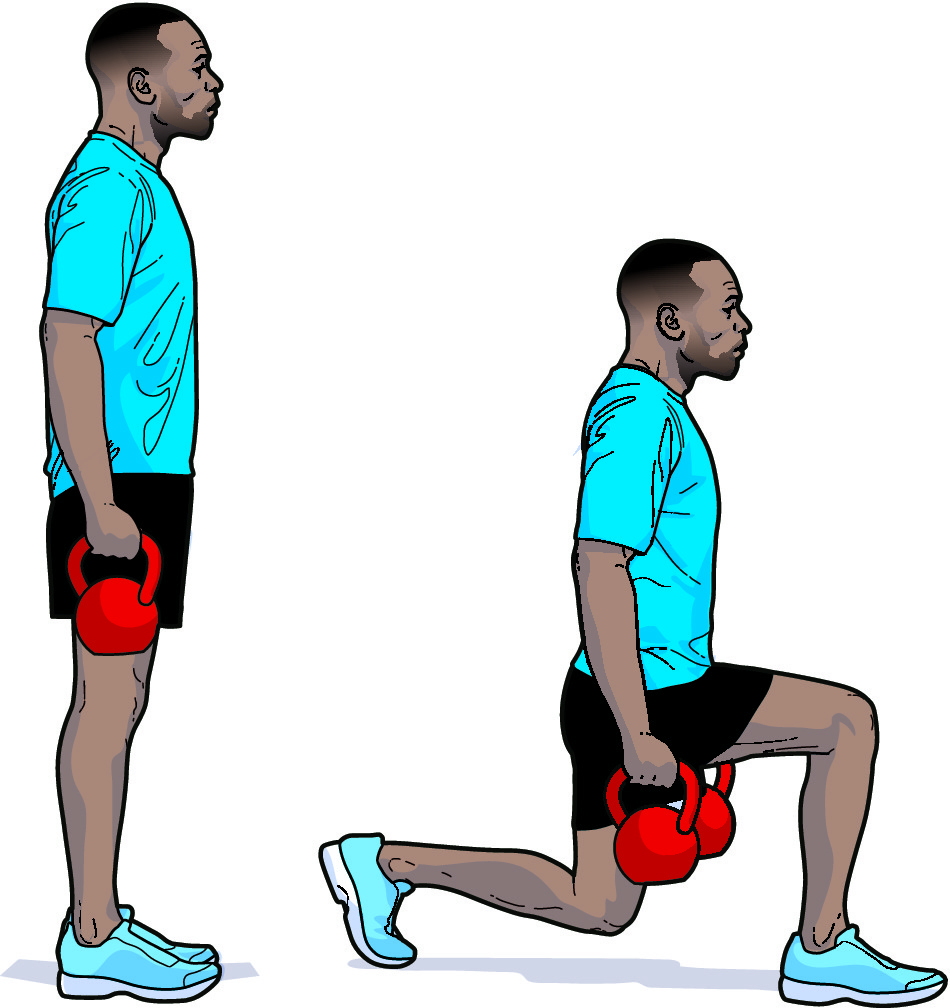
Exercise 3: Reverse Lunges
Muscles:
Front and rear thighs, bottom (quadriceps, hamstrings, glutes)
Why do it?
You have less nerves supplying the back of your body in comparison to the front. By lunging backward you engage more nerves, which will help with muscle development.
Technique:
- Stand upright, holding a kettlebell in both hands
- Step backwards with your left leg
- Bend both knees to perform a lunge
- Step back to the standing position
- Complete one set before switching sides
Safety tip:
Don’t lean forward with your upper back.
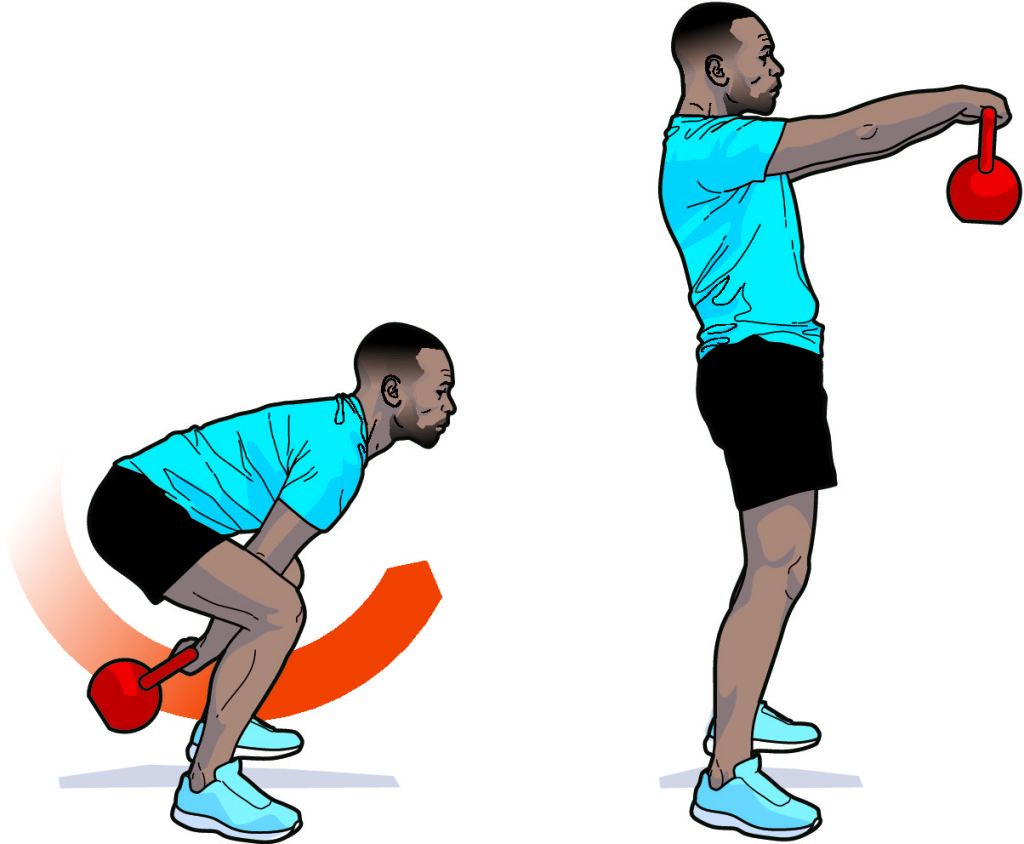
Exercise 4: Two-handed swings
Muscles:
Arms, shoulders, core, back, legs (biceps, triceps, deltoids, transversus abdominus, rectus abdominus, quadriceps, hamstrings)
Why do it?
A great way to improve your cardiovascular fitness while toning all the muscles in your body.
Technique:
- Stand with your feet slightly wider than hip-width apart and bend your knees
- Grab hold of the kettlebell handle with both hands
- Your forearms should be between your inner thighs
- Keep your stomach and back muscles tight
- Drive your hips forward, lift your torso and straighten your legs
- Swing the kettlebell forwards until it’s level with your shoulders
- Swing the kettlebell back down between your legs while pushing your hips back and keeping a bend in your knees
- This is a fast, snapping movement
Safety tip:
Don’t arch your back.
Exercise 5: Around the world
Muscles:
Arms, shoulders, core, back (biceps, triceps, deltoids, transversus abdominus, rectus abdominus)
Why do it?
This exercise will train all the muscles in your arms and core. The ideal exercise if time is limited.
Technique:
- Stand upright and hold a kettlebell with both hands in front of your chest
- Keep your core and back muscles tight
- Lift the kettlebell over one shoulder in a semi-circular movement
- Move the kettlebell behind your head and lean slightly backwards
- Rotate the kettlebell over the other shoulder back to the starting position
- Repeat one repetition clockwise followed by an anti-clockwise repetition
- Keep alternating between clockwise and anti-clockwise
Safety tip:
Keep your core tight when leaning backwards.
Exercise 6: Upright rows
Muscles:
Upper back and shoulders (trapezius)
Why do it?
Sitting in front of a computer causes your head carriage to move forward. By strengthening your upper back and neck you can improve your posture and running technique.
Technique:
- Stand upright and hold a kettlebell with both hands
- Pull the kettlebell up to your chin
- Keep your elbows higher than the kettlebell
- Lower the weight slowly until your arms are straight
Safety tip:
Look forward, not down.

